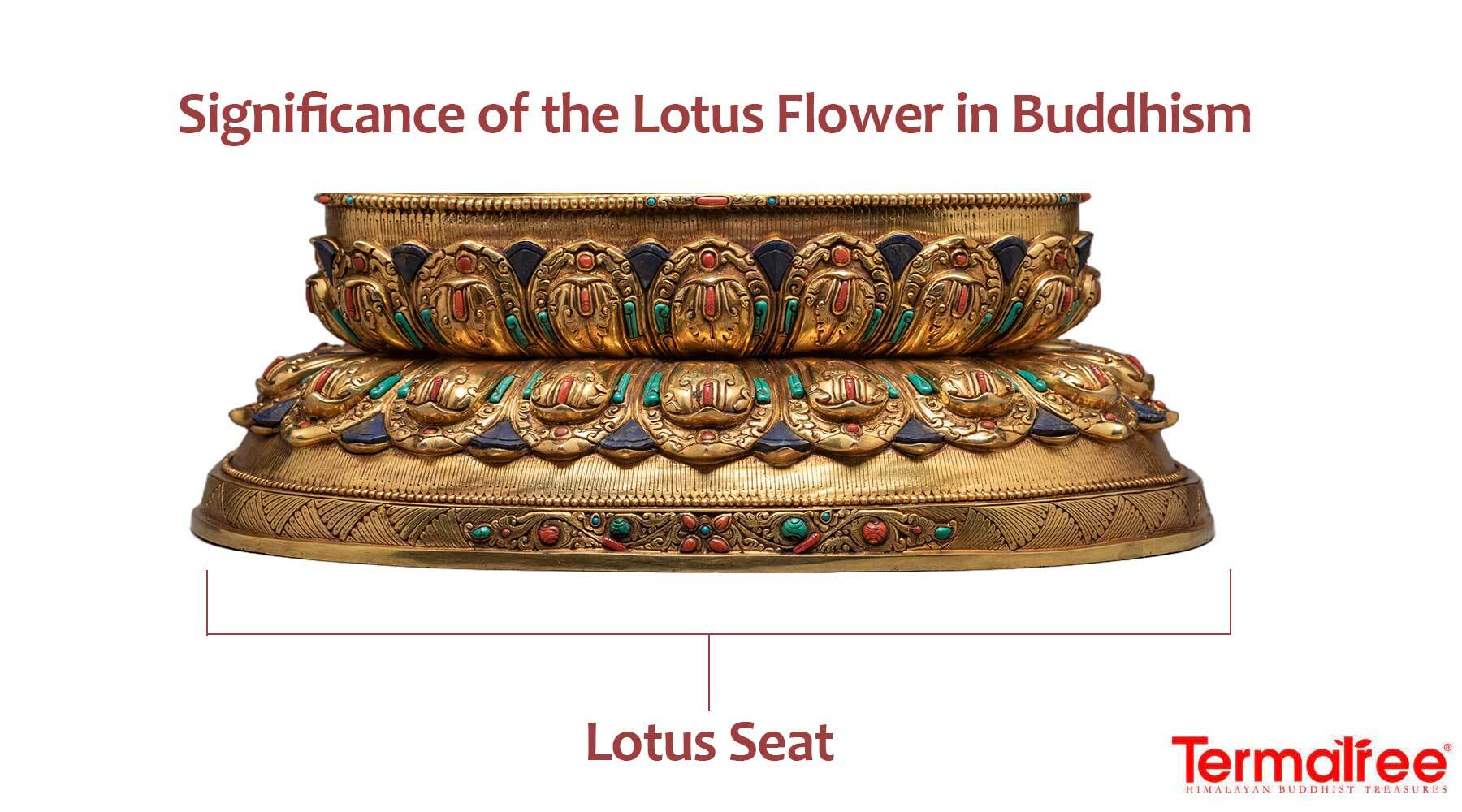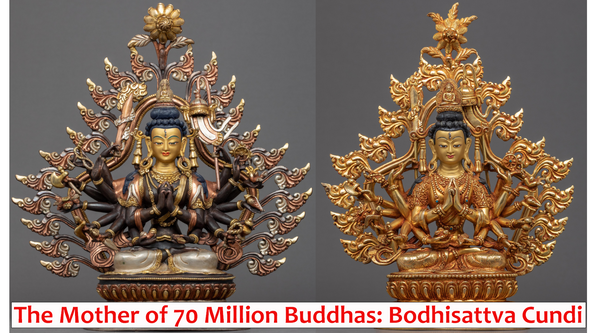Significance of the Lotus Flower in Buddhism
The Lotus Flower Meaning
The lotus plant is a perennial, aquatic plant that thrives in nutrient-rich, murky conditions as it represents how the flower grows over murky water, looming above the water, which symbolizes the purity of the flower. The lush blossoms develop there and open one by one as the lotus blooms. The lotus is regarded as a symbol of life in Buddhism. In contrast to the flower itself, the mud represents the suffering, difficulties, and obstacles we encounter in life. Buddhists also believe that the flower represents spirituality, self-purification, rebirth, and reincarnation. Lotus flowers come in a variety of hues; the central inner part, the stamen, and the carpel are in a yellow color, which represents the path and goal of enlightenment. All beings have the same potential to become enlightened, as the lotus flower serves as a potent reminder.
The human soul can acquire the qualities of a Buddha and rise above desire and attachment to reveal the true nature, just as the lotus emerges from muddy water to rise to the water's surface to bloom in beauty and purity. All things considered, that's the foundation of who we are as humans. And the lotus flower is compared with the term "enlightenment" as it blooms from the murky waters, or in this case, is compared to the defilement of the water. The delusions of life are directly compared to the waters that the lotus needs to overcome, as they cannot taint the beauty of the lotus that the water tries to inflict on the blooming process. That's also how we see wisdom and compassion in relation to all the human struggles and negative illusions in our lives.
The Lotus Flower Symbolization
The lotus flower has a number of representations and meanings that have been described below.
Spiritual enlightenment: due to the struggle of the flower through the harsh conditions that it has to go through in order to bloom fully in all its glory. This represents the awakening of the spiritual body and overcoming the material world to reach spiritual enlightenment and wisdom.
Detachment: It represents the lotus flower's detachment from the muddy water, which in contrast to our lives, separates oneself from the negative aspects and focuses on things that matter, like wisdom, human bonds, and understanding of oneself, which would benefit our souls. As the lotus flower separates itself from the water and dirt that sully its environment.
Resurrections and new beginnings: Just as the lotus emerges from the murky waters, so too can the human soul for the human. Every day, the flower emerges from the water, blooms, then recedes back up and sinks back into the same body of water. The cycle is continued the following day when a new lotus blooms.
In contrast to the human soul, purity, and cleanliness: The lotus represents cleanliness and purity, particularly of the human soul, as it emerges each morning from the murky waters pure and untarnished. Neither the journey nor the daily contact with mud and murky water can ever taint the flower's center.
Personal development: The lotus slowly unfolds, each petal signifying a step toward enlightenment. The flower represents personal advancement in this sense. The transformation it brings to people's souls is symbolized by the lotus flower.
Nature and womanhood: A fully grown flower represents a mature, growing female, while a lotus bud is sometimes used to represent purity. The lotus is a wonderful symbol of staying true to who you are and who you are as a person. It doesn't care about its shadowy surroundings; it stands tall and proud. It is grounded. Just by being there, it improves and beautifies its surroundings.

Click Here To See Our Tara Statue Collection
These are the lotus's enduring meanings and different representations of how the lotus flower is represented in different states. They are mainly differentiated by the color they are painted in, with each shade giving a different meaning.
- The red lotus flower: signifies love, care, affection, and other romantic feelings.
- The white lotus flower: The Buddha's heart and purity of body, mind, and spirit are symbolized by the white lotus. It is portrayed as the destination at the end of one's spiritual journey and emerges spotless from the murkiest waters.
- The blue lotus flower: The blue lotus represents wisdom, knowledge, and intelligence and is often shown partially open. This indicates someone who has started their spiritual journey by leaving the concept of "self" behind.
- The pink lotus flower: The pink lotus is the most supreme and honored lotus. It is in full bloom and symbolizes the Buddha, who associated himself with the lotus, unsoiled by the mud.
- The red lotus flower: The red lotus symbolizes compassion and the original state of the heart. It is the red lotus of the Heart Sutra and is shown in full bloom. It can also represent the history and stories of the Buddha.
The Lotus Flower Influence
The first steps of Gautama Buddha, according to legend, caused lotus flowers to bloom everywhere he walked. Since he introduced Buddhism to Tibet by subduing or converting the local deities, Padmasambhava, the Lotus-Born, is revered as the Second Buddha there. He is typically shown holding a flower. The Guru Padmasambhava, also known as "the lotus born," was also believed to have been born from a lotus flower while proclaiming to have already attained enlightenment. The lotus flower is shown in various statues of Tara, usually depicted with two lotus flowers as she holds them from the stem, which blooms beside her head. Of the two flowers, one is in full bloom, and the other one is bud nearly booming. The blooming lotus flower represents the present and also the present Buddha; the bud represents the future and also Buddhas yet to be born.
The lotus flower also gave rise to the lotus sutra, one of Buddha's most revered teachings. The Buddha in the Lotus Sutra is actually the divine, eternal Buddha who attained perfect enlightenment countless eons ago. He partially reveals His nature as the supreme object of faith and devotion through the language of wondrous powers. One of the earliest Mahayana Buddhist texts revered as the essence of truth is the Lotus Sutra, also known by its Sanskrit name Saddharmapuarka-stra ("Lotus of the Good Law [or True Doctrine] Sutra").

Click Here To View Our Guru Rinpoche Statue Collection
Double petaled lotus flower: lotus flower: some statues depict the deity seated on a lotus throne with a single petal lotus flower. A single row of lotus petal flowers is carved into the disc, which is blooming upright towards the sky.
Single petaled lotus flower: not very often seen in statues, the double petaled lotus can be seen below the deity where he sits. Two rows of petal flowers are lined up at the base of the lotus flower. The two layered petals face upwards and downwards.





